If I’m privileged enough to have you as a repeat reader, you may know that I almost exclusively shoot Canon and Arri cinema cameras. There’s no real reason behind that, just that I’ve owned two Canon C-Series cameras and every shoot save two that I’ve been hired on where I’m not bringing gear has been Arri. Doesn’t mean anything besides I’m comfortable with them. Because of that, I’ve always been interested in getting my hands on a RED for an extended period of time just to see what that system had going for it, but my brief experience with DSMC2 cameras didn’t leave me incredibly excited to hunt one down for review purposes. They were a bit finicky on set, I must say. They felt like computers with lens mounts more than dedicated cameras. The Ranger was the first RED in recent memory that actually got me excited, but no one had one I could borrow (I certainly wasn’t going to spend thousands to rent one for a review). Then the V-Raptor came out. Long story short, Filmtools let me borrow their demo unit for a week and I was able to use it on a couple gigs and play around with it to my hearts content. These are my findings.
Note: This article was edited on 10/11/22 to include a segment towards the end talking about using the V-Raptor on a feature film.

To start, for those who may not know, the V-Raptor is RED’s first DSMC3 camera body consisting of a new Full Frame (or “Vista Vision” in their nomenclature) 8K sensor and a smaller, lighter body with a wonderful “Arri-style” (let’s call it) menu on the right side of the body and all the basic necessary ports like SDI, locking power connector, Audio, and a built-in mini V-Lock plate.
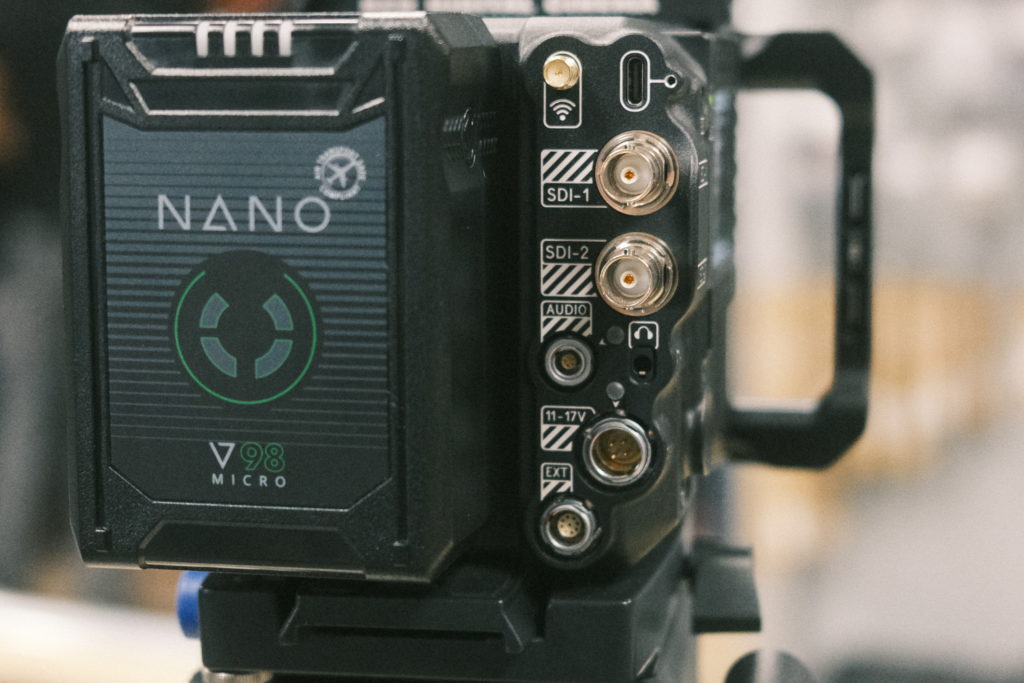
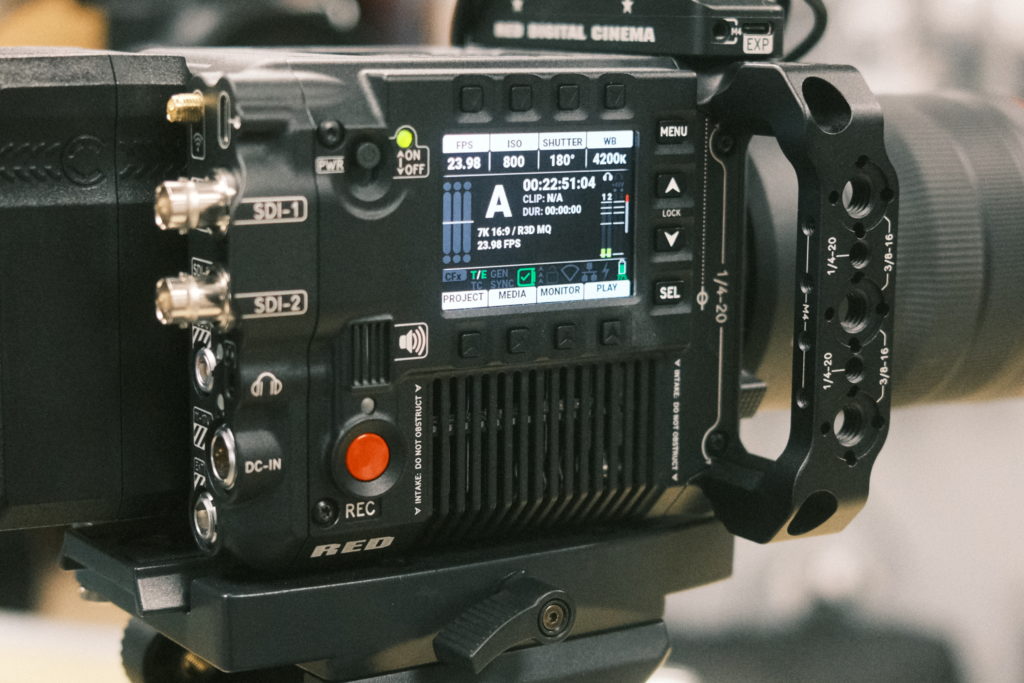
Based on the criteria I built for my C70 review, examining what truly makes a “cinema camera” vs just a very nice video camera (read that article to understand I’m not making a value judgment there), let’s see where the V-Raptor lies:
– Full Frame 8K Sensor w/ 6K S35 Mode et. al.
– 2 SDI Ports
– 5pin LEMO for Audio
– No Accessory Power
– No Timecode or Genlock Ports***
– Redcode Raw & ProRes w/ Proxy
– LEMO Power
– RF Mount (PL, EF, etc adaptable)
– “17 stops” of Dynamic Range
– Robust Build Quality
– Reliable Recording Media
– Full Image Control
– No Internal NDs
Now, that asterisk on the TC/GL thing is kind of big for a cinema camera, but RED do sell an adapter called the “Expander Blade” which is very small, attaches to the camera’s EXT port and runs along the side of it, and gives you those features as well as Run/Stop and RED Ctrl LEMO ports. I think you can use that port just for TC if you have the right cable but I didn’t test that. In any case with the Blade attached I believe you’ve solidly got a lightweight, relatively full-featured cinema camera on your hands. Accessory power can be handled by the V-Lock if necessary using Dtap, and while I’d love to see NDs in the V-Raptor, especially seeing as they’re in the XL, but oh well. In a narrative situation you’d probably have drop in NDs or even a screw on if you were feeling frisky, but I do wish they were built-in. That’s huge for me, personally.

Having used the camera for a week straight I can tell you I really enjoy this camera. I used it on a run-and-gun corporate b-roll thing, a narrative sketch, and a live event and in all three instances it performed flawlessly. I guess I’ll get the stuff I didn’t dig so much out of the way so we can end on the fun stuff and put the proper pep in our step on the way out.
First off, and this is on me, I should have grabbed the wall power cable and the audio splitter/XLR Adapter from Filmtools. Those would have come in clutch, I had to run separate audio for the Sketch (the live event had separate audio anyway) and the batteries never really became an issue, but it was precarious because I only own two mini V-locks. The camera will NOT fit a larger battery, it must be the mini-V form factor. I was getting about 100min per 98kWh battery, give or take, and as far as audio is concerned technically it can handle 4 inputs but it also has a scratch mic built in which was nice. No 3.5mm jack though, interestingly. For a smaller camera like that I kind of expected one.

Another bummer is the single CFexpress card slot. I’m really excited that they’ve moved to CFexpress instead of the old REDMAG system, but I’d love to have seen a second slot for redundancy or just so you don’t have to swap cards as often. On each 512 CFx card I was getting about 29m in 8K MQ (we’ll run all that compression stuff down in a bit), 1:31 in ProRes 422HQ, and 2:17 in ProRes 422. A thing I noticed that might be nice for some users is that, in ProRes you can either save to 4K or HD, but nothing else. While that might sound like a compromise, that means you’re able to shoot the full 8K frame and have it save to 4K or 1080p ProRes files without cropping. For some, losing RedCode might be a complete non-starter, but for people shooting for simpler gigs or who are used to coloring compressed Log files, that could be huge. Having an 8K FF image downsampled to 4K in ProRes 422 or higher could be exactly what you need and would surely look fantastic. You can also save ProRes Proxies when you record R3D, which is nice.

On compression, RED has ditched their numbering system and gone for a simple High Quality, Medium Quality, Low Quality set of options. When I asked, RED told me those values were about equal to 3:1, 5:1, and 8:1 compression respectively.
WHAT? LOW Quality is 8:1? The Social Network was shot at the equivalent of 8:1 (REDCODE 42 was equivalent to 7.5:1), I think we can all agree that wasn’t “low” quality. RED is saying LQ is best for Web, TV, and Doc stuff but… c’mon… We definitely need a 12:1 style option and shift everything down, having that be LQ, and then have 3:1 be “XQ” or something. In any case, for basically anyone reading this: just leave it at LQ and be happy. I think I was getting around an hour per 512GB card at LQ, although I seem to have neglected to write it down. Either way, LQ will serve you just fine, even for your indie feature. But hey, if you’ve got tons of cards and storage, go nuts!
Okay let’s try to bang out the other hits I found quickly so as to not dwell on them: people are complaining about the RF mount, I don’t think that’s dumb at all that’s where the industry is headed and you can adapt anything to it but I did notice AF performance with a Canon-made RF to EF adapter on my Sigma 18-35mm and Tamron 24-70mm v2 left a lot to be desired. On native RF glass it was lovely, no problems there.
The camera still crops the sensor as you drop resolution which people don’t like but I also didn’t find that to be an issue as 6K S35 looks fantastic and doesn’t leave me desiring anything, plus even a lot of my S35 lenses would cover the full sensor if they were above like… 28-35mm so I found I didn’t have to use S35 mode too often unless I just wanted to.
It takes 30s to start up and 10s to turn off, which is kind of a long time compared to the competition. The battery is displayed as a percentage instead of time remaining which isn’t entirely helpful (time remaining is buried in the menus though). Changing between ProRes and R3D means the camera has to restart which is kind of lame but oh well, I can’t imagine you’d be doing that in the middle of the shoot. The Monitor Menu’s readout sometimes wouldn’t match the camera body menu (we’ll dig more in to that). The Monitor (which I do like) is kind of glitchy in general. The lens locking ring is made out of plastic and loosens too easily although RED have said they fixed that and you can send your Raptor in to get it addressed if you bought it before April (or you can get an adapter that mounts to the front ¼”x20 taps). The front record button is pretty close to the lens release button (potential for uh-ohs). Annndddd pre-record is too short to be very useful in my opinion. 7.7s in 8K LQ (3s in HQ), bumping up to 14.7s in 6K LQ which is a bit better, but if you’re in Wildlife or whatever you might want something more like 30s (which this camera tops out at) and the best quality you can do that in is 3K S16 crop! You can get 26s at 6K but only in 1:1 ratio, which is way too specific. The options vary wildly depending on ratio, so I did the work for you and listed them all below (times are in seconds, listed in HQ/MQ/LQ order):
| 8k FF | 6K S35 | 3K S16 | |||||||
| 17:9 | 3.2s | 4.7s | 7.7s | 6 | 8.6 | 13.9 | 24.5 | 30 | 30 |
| 16:9/2:1 | 3.5 | 5 | 8.2 | 6.3 | 9.1 | 14.7 | 26.1 | 30 | 30 |
| 2.4:1 | 4.1 | 6 | 9.7 | 7.5 | 10.8 | 17.5 | 30 | 30 | 30 |
| 1:1 | 6.4 | 9.2 | 14.8 | 11.5 | 16.5 | 26.5 | 30 | 30 | 30 |
| Max FPS | 120fps LQ | 160fps MQ | 320fps HQ | ||||||
That’s kind of everything I ran into that was bugging me, so let’s dive into what makes this camera great!

First off, the sensor. We’ve got a brand-new “Vista Vision” sensor (it’s 3mm longer and 2mm taller than my C500mkII’s sensor so… do I also have a Vista Vision sensor?) which outperforms even the Gemini in low-light performance and honestly, I can’t see any noise worth talking about in any of my footage or tests so that’s very encouraging. The new sensor also has a Thermo Electric Controller (TEC) on it so you *drumroll* DON’T HAVE TO BLACK SHADE ANYMORE! I mean you do, but only if you’re doing wild shifts on the shutter or frame rate. If there’s any temperature shifts or anything like that, shoot away! If you do have to black shade, it takes 4 minutes and 35 seconds. Not horrible, but obviously not as fast as most of the competition. Way better than the 30m+ days of yore. The new sensor is also claimed to have 17+ stops of Dynamic Range, but I can’t test that scientifically so I’ll just agree with some healthy journalistic skepticism. This is the same sensor that you’ll find in the Raptor XL. Some images from the FADED Santa Monica comedy show I shot & produced, zoomed in so you can check out the (lack of) noise, are below:
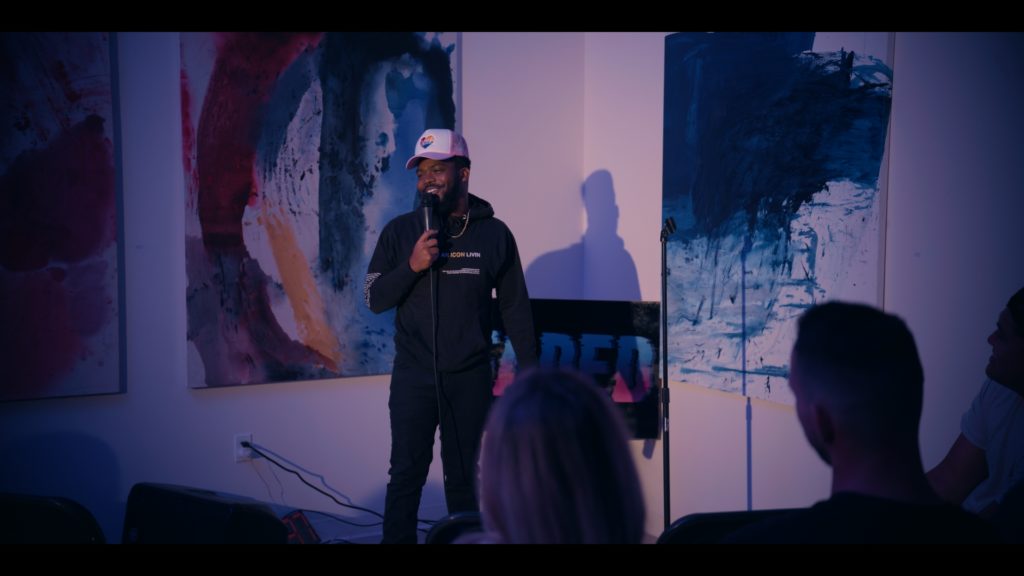
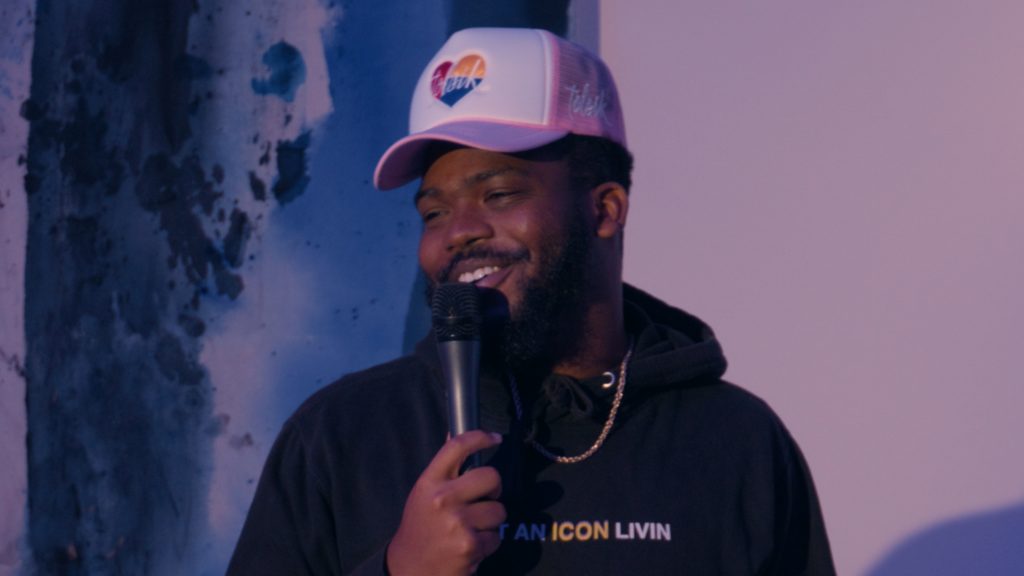

You’ll notice I zoomed in 400% and the image still looks fantastic. That’s the joy of high resolution capture, especially for something like a live event: you’ve got multiple “lens” options in one setup. Granted, you gotta have your image in focus for it to work, but it will work. I also appear to have shot those at ISO 400, but then I brightened it ever so slightly in Resolve so you can see how flexible REDCODE is here too. No need to shoot at ISO 1600 or whatever (although looking at the image at ISO4000, it’s far far too bright but also, similarly, low-noise. Looks like film grain almost.
The sensor is not the Monstro sensor, although it does have the same size microns pixel pitch. It also apparently has 2x the scan speed of the Monstro (so not Global Shutter but very low rolling shutter) and outperformed the old sensor both in visual and Dynamic Range tests internally at RED. The Raptor sensor also doesn’t have dual native ISOs because it doesn’t need them; it outperforms the Gemini as-is.
Somewhat related: Redcode! Redcode is lovely. On set, all you really have to worry about is your image being in focus and not blown out/crushed and you can leave the rest of the decisions for later: whitebalance, exposure, gamma curve, color space, it’s all in there AND it doesn’t seem to slow down my system at all (a modest self-built PC from 2017ish with an i7-7700K and GTX1070 in it with 64GB of RAM). I’ve had no issues with 10/12bit log files from the C500 or Alexa but… Redcode is very very nice. Canon RAW definitely slows down on my PC. I’d love to see RED loosen up on the lawsuit side of things when it comes to compressed RAW, a different article altogether, but until then it’s certainly a big selling point of these cameras. As I’m also a semi-professional colorist on top of being a DP (in the sense that I am hired as a colorist from time to time on top of doing my own projects), Redcode really is a dream to shoot with as I know exactly what I can and can’t get away with in post and what options I have, of which R3D files give you an abundance of. You also don’t get way more time on your CFx card by switching to ProRes so for a lot of projects having, ya know, six cards at the ready would be perfect. Again, just shoot LQ. Somewhat related, another thing I really like about the Raptor is, when you go to format a card, it tells you if there’s footage on the card, how many clips, and asks if you’d like to continue. That’s great! The camera will also take non-RED CFx cards from many manufacturers, but will throw a warning at you. Weirdly enough, the Raptor was happy with my Delkin and NKI cards (neither being household names by any means) but refused to accept my SanDisk cards! Thought that was kinda weird.

Moving on to the body, this is what I wanted to see with a new camera from RED. DSCM2 felt very “hot-roddy” and I want to be the one doing the aftermarket stuff, I don’t want my camera to come that way. It didn’t feel as polished as a $60K or so camera should. DSMC3 changes all that; it’s very cohesive, complete (save the lack of NDs), and pleasurable to use and hold. I love the menu on the side, which more in line with other high-end cameras, and the size and weight (only 4lbs!) make it feel at home in the hand or on any given support system. The IO is everything you need and nothing you don’t, although I say that obviously assuming you’d have that aforementioned Expander Blade attached, and the wireless system built in is a TREAT as you can just bring up your phone, access the free Redcontrol app (for iOS and Android), and you’ve got all the camera’s settings right at your fingertips. I love the app. The body also has a decent number of ¼”x20 mounts on it (but no 3/8ths unfortunately) allowing for some rigging as needed, although I imagine you’d get a cage or something for it.

The SmallHD monitor built for the camera does take up where you’d traditionally put a top handle, so make sure to get that GDU one that comes up from the side. The monitor is really easy to get on and off for storage/transport and doesn’t even have a cable, so that’s nice. I’m mildly worried about the exposed contacts on the “bridge” of the monitor where it connects to the camera body when you do remove it, but maybe there’s a cap or something just didn’t get from Filmtools. I was just using the off-the-floor demo unit after all. As I mentioned it could be a little glitchy, but overall it’s a great looking monitor, nice and big, usable outdoors, and all of your menu items are easily accessed from the menu there (I left the screen protector on in the below image, the plastic isn’t bubbling).

In regards to monitoring, you can load LUTs either in to the body (my preference) or in to the monitor, and those LUTs will save with your footage so Post won’t be left wondering what they’re supposed to do. Since you’ll probably be shooting in Redcode you can just make sure your exposure is within the “goalposts” or “stoplights” (whichever you prefer) and you can see more detail by tapping on that section of the monitor. I would generally have the T-Stop where I wanted it and then adjusted the ISO as needed since I didn’t have any NDs to work with. As I mentioned before, I haven’t run into any noise issues operating that way, but in general I was shooting in well-lit environments so I was somewhere between ISO 200 and ISO 800 usually, and then as we mentioned the Comedy show was at ISO400 in a very dark room bathed in RGB blue at a low value.
As a sidenote about LUTs, I wanted to see if I could match my C500 to the Raptor. Partially as a method of making it easier to use both cameras for that live event, partially to add another “look” to my camera’s repertoire, and partially to put to the test the thing I’ve always said about cameras which is that cameras are so good now that you can generally get the same “look” from most of them, it just comes down to workflow and ergonomics and “a good dataset” as Steve Yedlin says when considering which camera to use. After a week of tinkering, I can confidently say I got the C500 about 98% of the way there to matching the Raptor’s “Film Bias” color response (images below, one is out of focus not lower-resolution. Sorry about my face.)


The Raptor with the LUT seems to be a bit more desaturated overall and handles skintones with less vibrancy so that’d be something I’d consider in post instead if using that look on my C500, but overall it’s cool to now have a “Subjective” look (my own creation), two “Arri” looks (matched to the Mini and the LF separately) and now a “RED” look ready to roll in my own camera. Should make for some interesting creative opportunities as well as make it easier to run as a b-cam, obviously. Without the “Film Bias” LUT on the RED, the image above (I won’t tell you which is which) goes quite green and colors are a bit more digitally vibrant. Obviously that’s a trivial fix, but in that specific shooting scenario that’s what happened.
Speaking of post, as I mentioned before the footage coming out of the V-RAPTOR is insanely gradable and doesn’t slow down my mid-tier system at all. I found I was getting full playback in Resolve and Premiere, and was able to pull all kinds of keys and windows were able to be sort of “hidden” by virtue of the fact that there’s so much detail in the negative that adjustments seem more “on set” than in post, if that makes sense.
It’s hard not to make comparisons to my C500 as that’s the camera I’m most familiar with, so I actually just went ahead and did a little comparison list to see which camera I “objectively” thought was better, as much as that can be true, with the winner of each category being bolded.
| C500mkII | RED V-RAPTOR |
| 4.3″ Monitor | 7″ Monitor |
| 2 CFx Slots + SD Slot | 1 CFx Slot |
| 2x SDI + HDMI | 2x SDI |
| 2x XLR + 3.5mm + Scratch | 5pin LEMO + Scratch |
| Basic Web Control w/ $600 Wifi Dongle | Redcontrol App (Free) + Built-in Wifi |
| Good Monitor Menus, no Body Menu | Good Monitor Menus, Great Body Menu |
| Every Button Customizable, Many Buttons | Limited buttons, no customization |
| 5s Startup | 30s Startup |
| 20s Blackshade | 4m50s Blackshade |
| 15 Stops Dynamic Range | 17 Stops Dynamic Range |
| 4K 10bit AVCHD + 6K 12bit Canon RAW Lite | 4K ProRes + 16bit Redcode up to 8K |
| DCI + 16:9 + Anamorphic Modes | 1:1, 2.40, 2:1, 16:9, DCI + Anamorphic |
| 10 Stops of ND | No ND |
| 38mm x 20mm FF Sensor | 41mm x 22mm “VV” Sensor |
| EF/PL User Swappable Mount | RF Mount |
| DPAF Auto Focus w/ Face & Eye Detect | Beta Autofocus, Zone Only |
| Cooke/i Lens Data | No PL Lens Data |
| 60fps Max in FF/S35, 120fps in S16 | 120fps FF, 160fps S35, 480fps S16 |
| 3s or 5s Pre-Record | Up-to 30s Pre Record (sort of) |
| No Interval Recording | Interval Recording |
| BP-A Batteries, XLR Power | Micro V-Mount, LEMO Power |
| $16,000 for Entire Package | $32,000 for Production Pack Lite |
So it looks like on paper I’m pretty evenly split. I think once again Canon shows us that it’s a fantastic solo shooter/doc cam with Cinema capabilities, and the RED is potentially more Cinema-focused by going for the XL version (we talk about that towards the end) with the option of using the OG version for those smaller shoots or solo/doc stuff. Image-wise I find both cameras to be excellent, probably leaning towards RED for the higher Resolution and Redcode. I know RED says they have 17 stops of DR and, again, I wish I could test that officially because I’m not sure if that’s all “Paycheck Stops” or a lot of “Gravy Stops” as my PVC colleague Art Adams has called them. I also think just working with the cameras, the Canon is obviously easier but essentially if you were to be making this choice for whatever reason, you can weigh which features are more important to you with the chart above or this article on the whole but either is a great choice in my book. Obviously price is going to be a big factor, but again it kind of just depends on the type of work you do and how much flexibility you need in Post. For documentary or corporate work you really don’t need Redcode, for instance, but it’s certainly nice to have in any situation. For an action film, you definitely would want that extra flexibility. Maybe having simpler built-in audio solutions is important to you, or NDs in-body. Maybe Autofocus is a dealbreaker, or maybe you must have those super high frame rates all the way up to 8K. Your call!
As I mentioned, I used the Raptor in 3 different shooting scenarios: a handheld b-roll thing for a corporate gig, a short sketch, and the comedy show. All the screen grabs you’ll see below are straight out of camera with RED’s “Film Bias Offset” LUT applied.
For the corporate gig I was literally just getting b-roll of a meeting in a nice office (it’s almost a showroom). I wasn’t running audio so all I needed was a nice image, and since it was b-roll I did a nice mix of high-ish speed (like 60 honestly) and regular speed. I also ran my Tamron 24-70mm so I had both the flexibility of a zoom and the lens-based image stabilization. At first I had some diffusion on the lens (seen in the group shot below) but didn’t like it so I got rid of it (which you can see in the single shots). Since the Tamron is a Full Frame zoom I was able to shoot 8K which was nice, so I set the frame guides a little tighter than usual so I had room to stabilize even more in post (I do prefer a rock-stable image but paradoxically dislike gimbals). I also, obviously, had plenty of room to crop in for variety as the final deliverable is 4K, which meant that nailing critical focus was… critical…

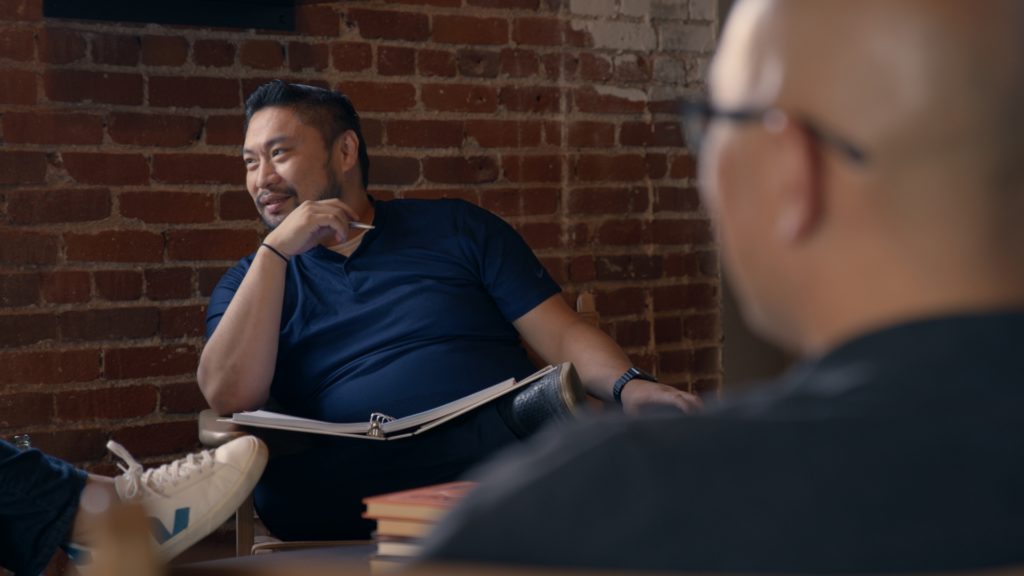

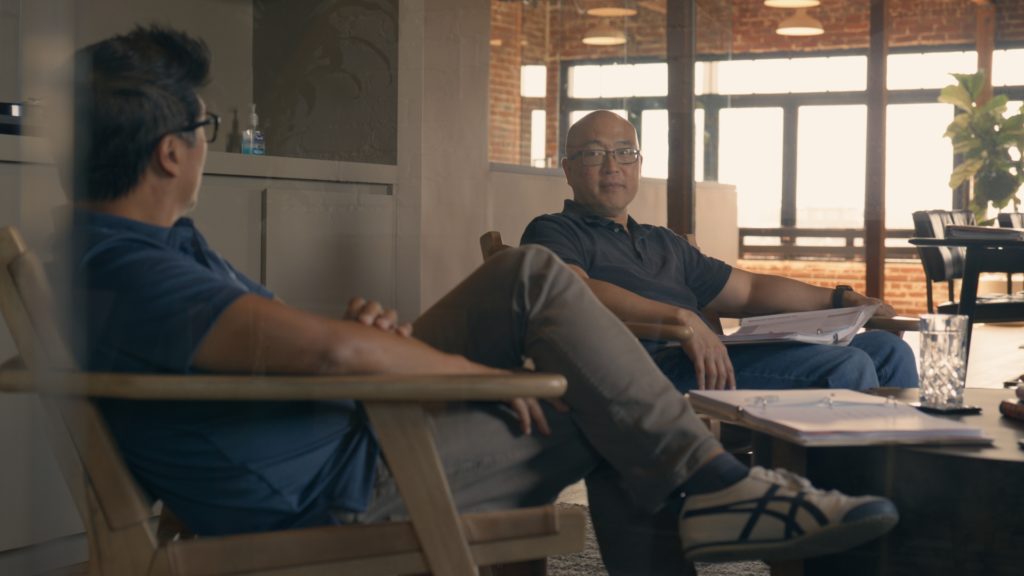
I suppose I should mention here, since I brought up high speed, that I basically didn’t test it. I know that’s probably where some of you will flip your desks because that’s all you cared about but I’m sure someone somewhere has gone into detail ad-nauseum about it. I simply don’t use it very often, and therefore I’m not necessarily an “expert” on the matter. 60fps is perfectly acceptable for my work. I can totally see where 120fps has its utility (and again, with this camera you can get buttery-smooth, low-noise 120 in 8K) but I don’t do any action sports or wildlife stuff, at least not yet, so I haven’t needed it. Especially for the b-roll shoot, do I really need 240fps footage of people sitting around a conference table talking? For product cinematography I can also see how you’d want a higher framerate, because you gotta drop some fruit in a fishtank or open a can in such a way you can see every droplet of water spraying out of it, but again I don’t do that type of work typically. If I get hired for any of that stuff, yeah, I’ll rent a RED. Obviously. Hyper-slowmo is really fun, I won’t deny it, but I’m almost squarely in the 24fps camp. Just thought I’d bring that up.


One thing I like about the C500 that’s decidedly absent on the Raptor is all the customizable buttons. On the C500 I can toggle focus peaking or magnification (or anything else) without moving my hands from where I like to rest them, whereas on the Raptor I have to go digging through menus, so just because of how I tend to shoot I didn’t use those features as frequently as I usually do. You can use the monitor’s assistants by swiping through the various pages in standard SmallHD fashion, but that still means taking your hands off the camera so you have to do that when you’re not in the middle of a take, which is kind of when you’d need them. Obviously I could have ran the focus peaking the entire time, but I didn’t. I’m happy with my focus pulling ability and seemed to nail it so no complaints there.

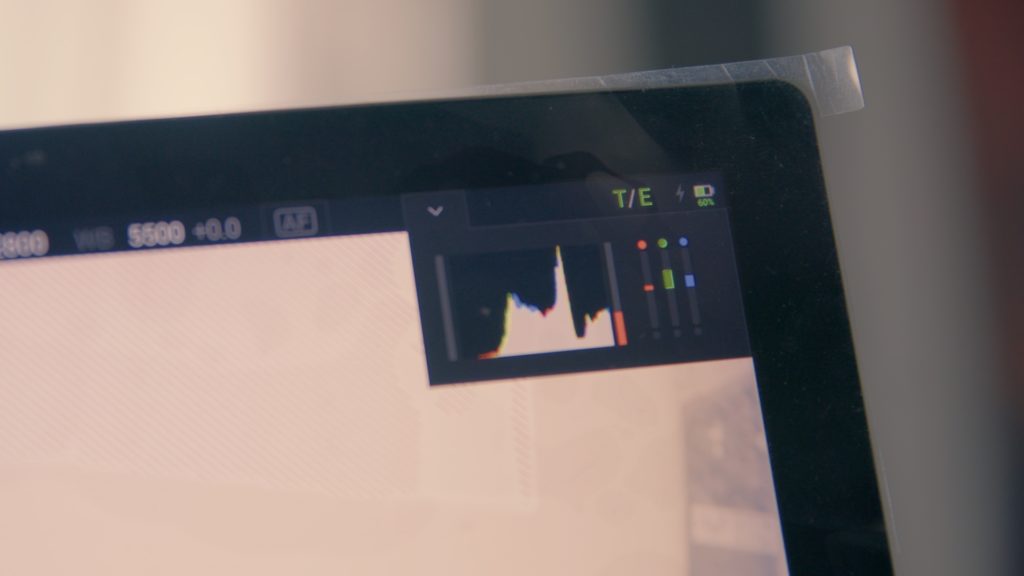
One thing I noticed was how well the camera handled what I guess I’ll call “color bleed”. I had shot in that room before, and one obstacle is the brick walls; they bounce a lot of the natural light around and everything (skin tones) really go red and all kind of blend together. Last time I was using my Fujifilm XT3, which is a lovely camera, but didn’t handle the brick bounce as gracefully as the Raptor. There were two other factors in play, one being my contrast filter and one being the natural light, but it was pretty obvious how well the RED was doing in comparison regardless. I ran the contrast filter on the XT3 to give it a little extra “perceived” dynamic range, rolling off the highlights a bit and lifting the shadows, but that also adds some diffusion which then adds to the muddiness the brick bounce was adding. I actually had a similar filter on my Tamron with the Raptor, which was fine, but I ended up removing it all together because the image just looked better without it. The second factor, the natural light, may have contributed to the Raptor’s success a bit because on my XT3 shoot there was a huge direct beam of sun hitting the brick wall, whereas my day in that location with the Raptor was more overcast so there was less bounce. Either way, like I said, the color separation is miles and miles better on the Raptor and that’s of no surprise to anyone. I’m not comparing the two cameras, only laying out my experience.
The narrative sketch we shot was relatively simple, only a few pages, and was basically designed so we could test the camera in that type of situation. For our equipment we ran the Raptor mostly on a tripod (I’ve been using the same Manfroto 501HDV since college for the love of god someone send me a nicer tripod) with the Tokina ATX Cine Zooms (11-20mm, 25-75mm, and 50-135mm) which all come in at at T2.9. I’ll have a review of those lenses coming out in the future. We also ran a Schoeps CMC641 for audio (review to come) which went to my old Tascam DR60DmkII, which was… fine.
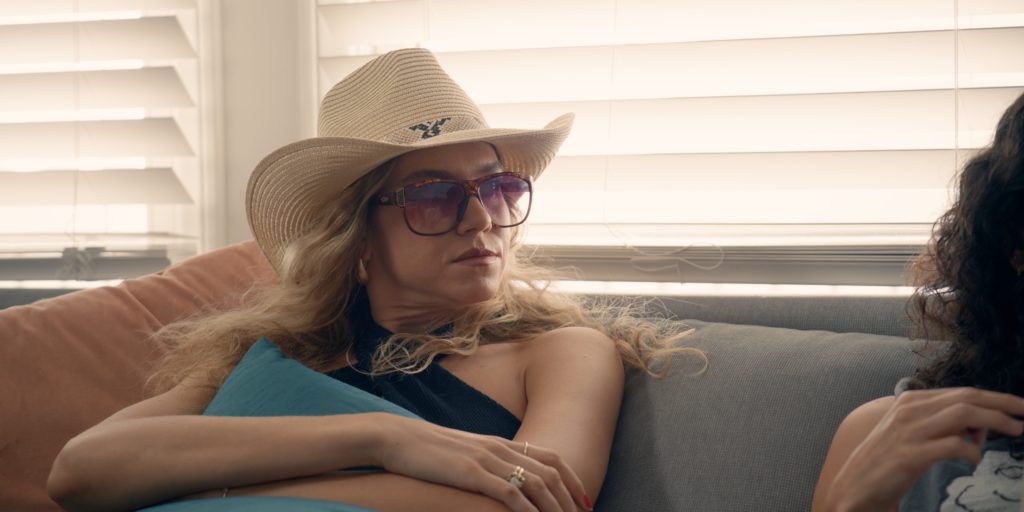

We shot in my friend Shannon Dee‘s apartment (who wrote the sketch and was one of the two actresses along with my other friend Steph Martinez) which had some nice natural light as it stood, so all I did was throw my Kino Flo LED panel (review also to come) in there to wrap the window light where necessary, using the X/Y feature (which I adore in a light) to match the light quickly and easily. I also used the Creamsource Micro (yup, another review) for a couple shots where it was a little tight or I just wanted to move quickly. No X/Y on that one but as I have a color meter, matching CCT was close enough. Again, I’ll have reviews of all these things coming up. I’ve been busy in that regard.
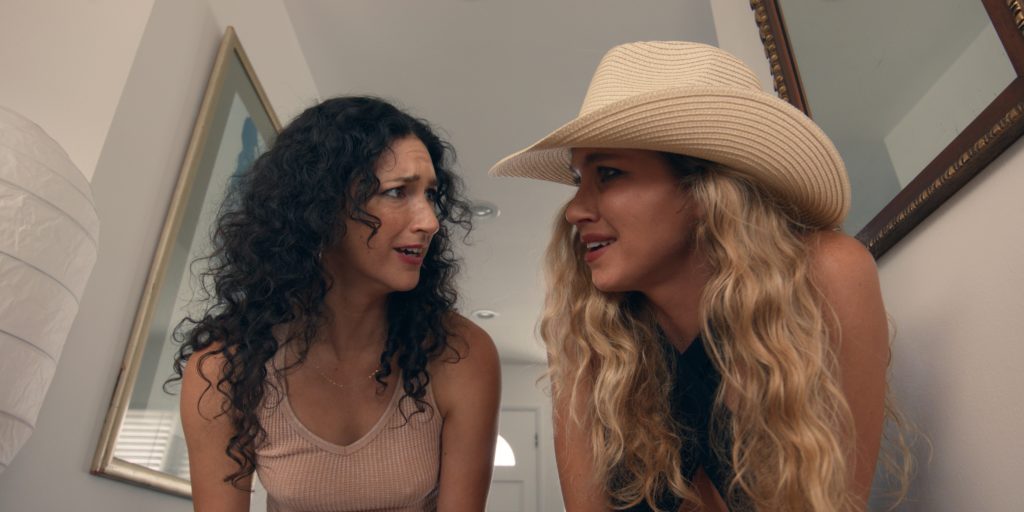
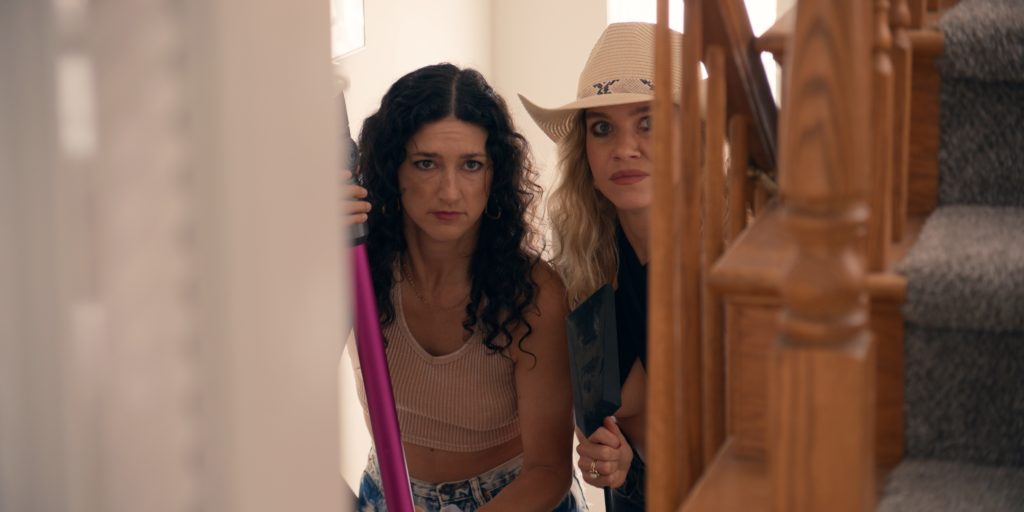

One thing of note with the sketch was we had about 4 hours to shoot the whole thing which is where the flexibility of Redcode, once again, was lovely. As I said before, with RED’s raw format you basically only have to worry about focus and getting your exposure within the goalposts. This allows you to work a bit quicker than you might using another camera since the settings of the camera are less important and can be decided later. For this shoot, I’d make sure the lights all matched and were at the correct ratio for what I wanted, but in general I just left the lens as wide open as I could and would run it. I just left the WB at 4500 for monitoring purposes and would quickly move the ISO around so the exposure looked correct on the monitor. As we were shooting using natural light, with the sun going in and out of cloud cover, the WB would change from time to time but the Redcode allows me to easily match the potentially disparate clips in the grade. Not to say a robust enough non-raw codec is super hard to match, but with raw files it’s as if you set the WB correctly on-set which is always going to be better, even if only by a bit. Same thing with ISO. I monitored with the Film Bias LUT that came with the Raptor, as I did for the other two shoots as it was my preferred look during my tests, and like the other shoots went for the low contrast, soft rolloff look which can also be adjusted later if desired. This was a comedy so a lighter, brighter look was warranted. Also, my two 98kWh Micro V-Locks from Core SWX were enough to get us through the abbreviated shoot (I juggled them off the charger when I could) and I filled one 512GB card and only put a few clips on a second one. All in all, I didn’t run into any hiccups and we got everything done without a hitch or slowdown.

As an aside, during the sketch there’s a part where the two actresses run down the stairs battling to get ahead of one another, so I took that opportunity to throw on the ultra-wide 11-20mm and go handheld to see what that’d look like. I actually had to do the whole thing one-handed so I could hold on to the railing as I was moving quickly backwards ahead of them. Not only did I not see any rolling shutter to speak of, but the camera was light enough that doing that move one-handed wasn’t too much of a burden and we were able to do the take 5 or 6 times. If I had any notes, and I noticed this on my run-and-gun shoot too, it would be that that simple right-side handle bracket that you commonly see on the Raptor can kind of hurt your first pointer finger knuckle, or the area right below it, after a while since it’s just a piece of metal. The size is good but I’d like to see some padding there or something. The Cowboy handle from GDU or the Outrigger handle are nice.
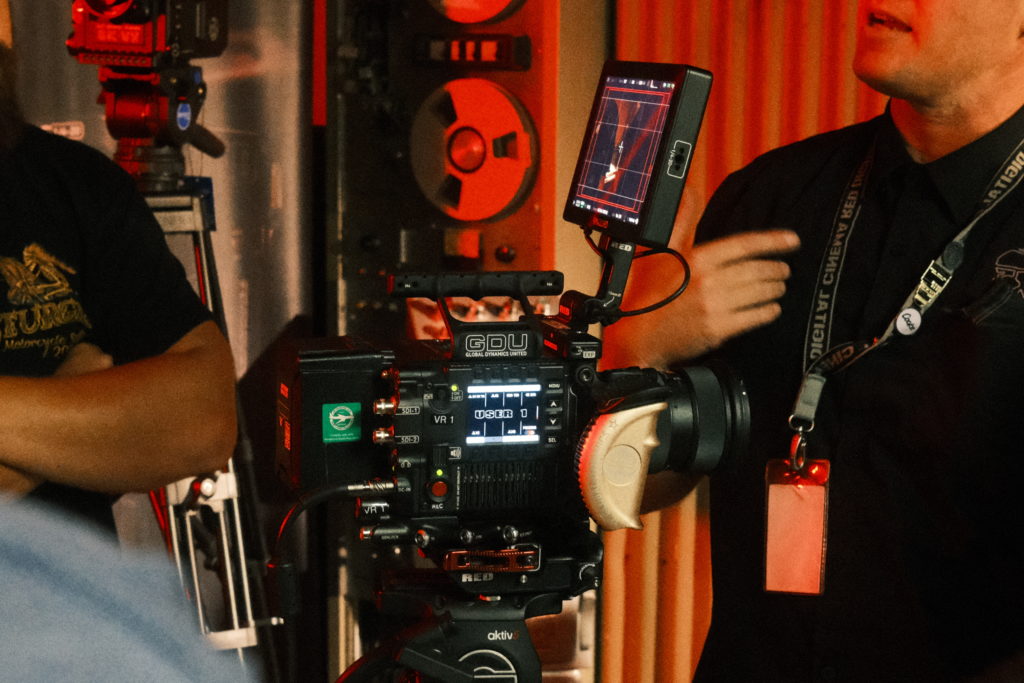
The live event was pretty easy. It was a special version of the stand-up comedy show I produce called FADED Comedy, which normally takes place on Melrose Ave but was in Santa Monica for a more “showcase” version (which we’re doing once a month now, which is great for me as I live 5 minutes from that venue vs 40 from the Melrose location). By this time I had already built my “Raptor Match LUT” for my C500, so I ran the C500 as the Wide that included the crowd and the Raptor as the Medium-Wide just of the talent. I did this because the C500, in 4K, would always be that wide shot but the Medium-Wide, in 8K, could be that or a close up or anything in between if I wanted. I also had a friend running the XT3 handheld picking off shots of the audience and the like. I’m working on a “Match LUT” for the XT3 as well but it took me the whole week that I had the Raptor to dial in the C500 version so at the time of this writing I haven’t done that yet.
The room we shot in was a big white-walled art gallery so I just bounced a Creamsource Vortex 8 (again, review to come) up into the high-vaulted ceiling set to a pretty saturated RGB blue and hit the Comedians with a Tungsten-balanced spotlight. This gave the room a really interesting kind of mood and feeling, which did seem to facilitate the audience’s ability to forget what they were doing and just focus on the performance (I think about that a lot actually). I’m not sure if I’d go with a full blue wash again next time, I’m still working out what’s best for that venue as we’ve only done it once, but anything to get the audience out of their heads and focused forward is good, and that setup achieved that result beautifully. I chose blue because it’s dark but still bright enough that people can see around them, and it also contrasted with the spotlight. I also considered that cameras prefer blue light to red light, REDs historically so, and I wanted the images to come out clean as possible for such a low-light setup. I think it worked out!


So what about the V-Raptor XL? The sensor is exactly the same, what does that extra $15,000 (for the body) get you?
In a word: Ports. Well, not just ports, obviously, but the XL is to the OG as the Amira/Alexa is to the Alexa Mini, essentially. The V-Raptor XL is the camera you want to get if you’re on a full-on studio set with all the accessories and support hardware therein, the Raptor OG is for everyone else. Really the main thing the OG Raptor is missing is accessory power. In that regard, with the XL you get:
2x P-TAP Connectors (3AMP Combined)
2x Rear 12v LEMO AUX (3 & 1.5 AMP)
1x Front 12v LEMO AUX (1 AMP)
2x Front 24v LEMO AUX (3 AMP Combined)
4x SDI Ports (one on the front for EVF/Monitor above that 1AMP Lemo)
BNC Genlock & LEMO Timecode (also ACN Wireless GEN/TC)
And of course: that wonderful internal Electronic ND going up to 7 stops in 1/4, 1/3, or 1 stop increments.
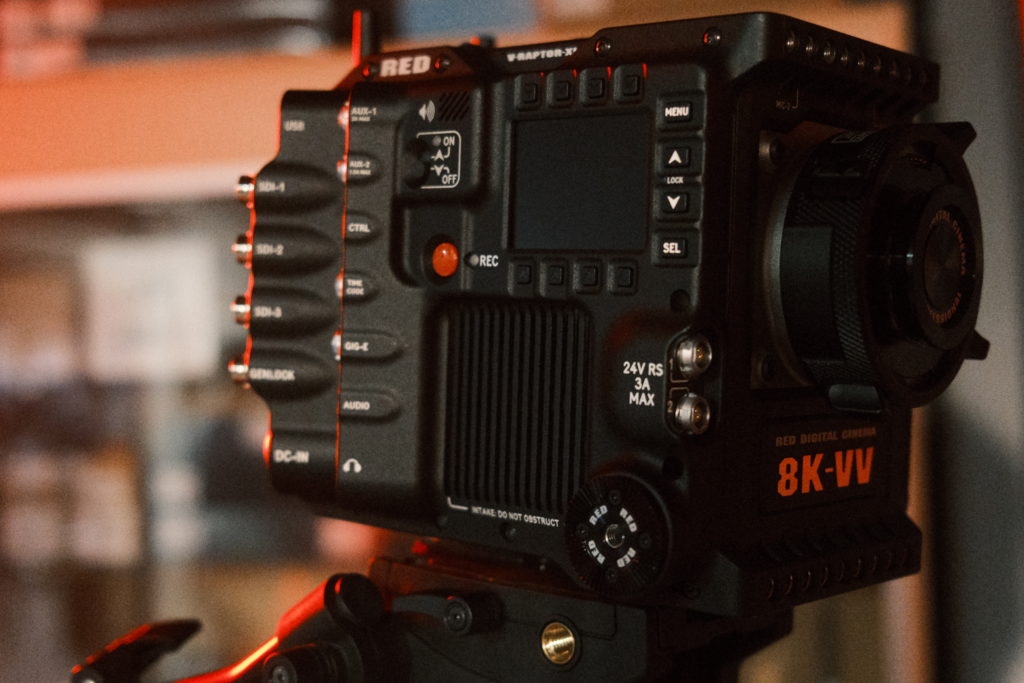

The caveat, though, is that if you want to use any of those AUX ports you have to either use High Voltage batteries or be on wall power. From RED: The term “High Voltage” refers to batteries that provide 24-28V nominally, but often can provide anywhere from 19V to 34V depending on cell design and charge state. They are most commonly referred to as 24V, 26V, or 28V depending on the manufacturer. V-RAPTOR XL is compatible with all of these voltages. The “Low Voltage” or “Standard Voltage” 14V batteries, such as the V-Lock or Gold Mount batteries that all previous RED cameras have been compatible with, are also sometimes referred to as 12V, 14V, or 16V batteries. V-RAPTOR XL is also compatible with all of these voltages. … When a 14 V battery is attached to the camera, all AUX power outputs are disabled, but main camera functionality remains the same.
In other words, if you don’t use a High Voltage battery you basically have a regular V-Raptor with a couple extra SDI ports, Timecode/Genlock, NDs, and a native PL or EF mount. That’s the other difference, the XL is not RF mount. Probably worth mentioning. I’m surprised they didn’t go for the full-sized XLR jacks, instead opting for the same LEMO port as on the OG Raptor, but so it goes.
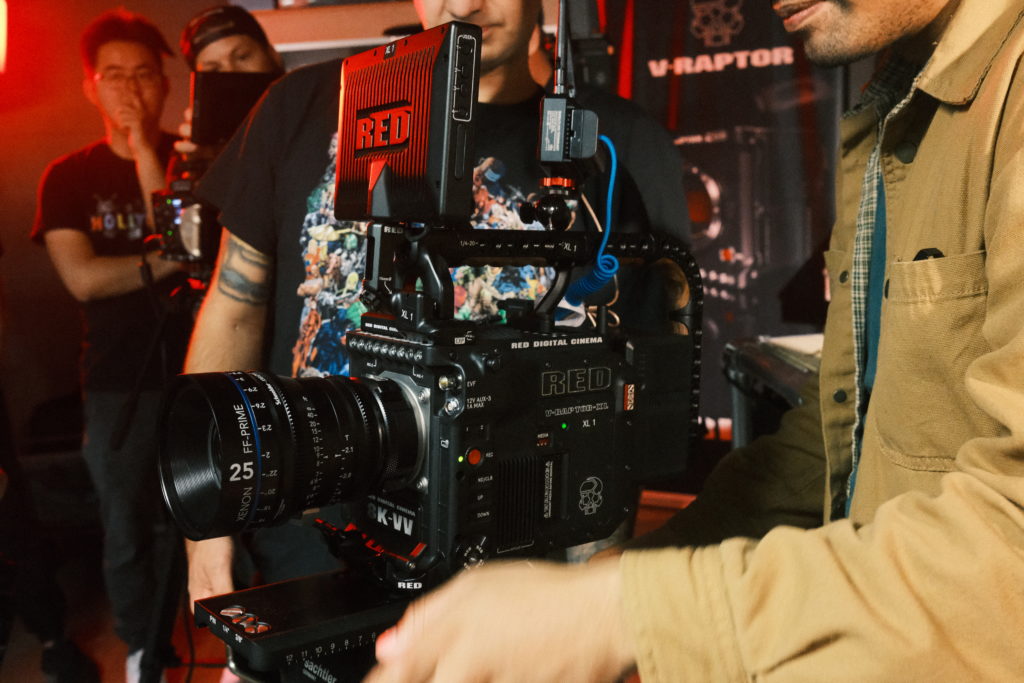
I spoke to a 2nd AC in Luxembourg named Sven about his experience using the OG Raptor on a decent-sized Feature he’s currently on, where he’s basically running his department with the blessing of the DP and 1st AC, and he had some great insight as to why the XL is potentially a more Cinema-focused camera, I.E. you’re doing a proper film, whereas the OG Raptor is better fit for smaller shoots or owner/operators:
Overall I find that the camera is a big improvement from other RED models, lots of things have been simplified, unfortunately sometimes for the worse though, more about that later. Generally the camera got a bit “ARRI-fied” which is a good thing as most ACs in the world will tell you. The menu is simpler and easier to understand and (almost) nothing is buried in the 10th submenu of a setting. […] The sound department of our shoot had some troubles with the cameras fans. We have lots of super quiet scenes where the noise of the camera fan were quite noticeable. I informed them before the shoot that the camera has NO fan control menu, that’s the weirdest thing to me and one of the aspects that makes this camera (for me) a no-go for professional movie sets. Compared to the Monstro, though, the overall fan noise is quite low and the constant struggle of manually adjusting speeds and watching the temperature with an eagle eye are over! Yay!
Our DOP wants to shoot .R3D in 8K with the full 17:9 Sensor. We also have very nice 1.3X Anamorphic Hawk 65 (Vintage 74) Lenses. Luckily the camera offers a 1.3X Anamorphic Mode, so that worked out nicely… or so we thought. During the prep week before shooting day 1, we filmed a frameguide for the 2.4:1 Aspect Ratio that is wanted. We did so using the internal 2.4:1 displayed lines as reference for our arrows. On day 2 of the shoot, when post-production got a hold of the test footage, they emailed me, informing me that my frameguide does not line up with a 2.4:1 image once they desqueezed the footage by 1.3X. That was super weird to me and so a filmed another one after wrap. The next day, post-production got in touch again and told me that my frameguide was wrong again. However they had noticed that it lined up (on the sides obviously) pretty much perfectly when they used a 1.33X desqueeze. So I started digging. […] Long story short: the camera displays a 1.33X desqueezed image even though the menu says 1.3X. This is a huge deal because it means that the menu is straight up lying to you and this causes some problems for us, partially because some things were on the very edge of the frame but mostly because this held up the post-production workflow and delayed some of the dailies, as well as made them redo the first few days in the proper desqueeze. (They used 1.33X because that lined up with my frameguide)
Another thing that I don’t like for a professional set is that the body itself is not made for pro-shoots. You need adapters to power things via LEMO, to get TC and to have the rec control via a focus remote like the Arri HI-5 or WCU-4. We have lots of shots from inside a car, where we often needed to make the camera as short as possible… this meant losing all 3 of the aforementioned features. Luckily we found a “shitty rig” solution to attach the adapter on the side, including a small v-mount battery which made the whole thing work, but it looked anything but professional. The same happens on the Ronin 2. Since the lenses are so heavy and the camera body is so light, we needed to put it as far back on the balancing plate as possible. This meant removing the TC, lemo, Rec control adapter because it’s too lightweight and takes up too much space at the back. So every time we’re on the Ronin, we need to manually press rec on the camera, super annoying. Lastly, and I put this last because I didn’t have time yet on this crazy shoot to properly analyze the situation: the rental place (Vantage) explained us that they had to custom fit a 3mm metal plate below the camera because the body is made in such a way that most accessories that attach to the 15 or 19mm rods don’t properly line up with the lens/center of sensor. That is absolutely crazy to me. Take this with a grain of salt though, because I have not verified this thoroughly yet. However, because of this necessary modification, it was basically impossible for us to use our focus motors on the lower rods because there simply too many moving parts between the motor, the rods, the custom 3mm plate and the Raptor body. So now we have our motors reaching the lens from the top which is also not ideal but at least this results in 1 less moving part.
Overall I would say the v-raptor is a good improvement and they resolved many issues while also creating smaller new ones. I, as an assistant, still prefer working on an Arri camera, but I am now less repulsed from RED machines!
I was over the moon to hear from Sven because he’s dealing with things I never would have run in to in my quick week-long test, so I really want to thank him for his insight. It totally makes sense that the more “stripped down” nature of the V-Raptor could cause some issues on a bigger set if it’s your A-Cam, which is funny because during the Filmtools demo the other week, a gentleman came in and sort of bluntly asked why he should “waste his money on an XL” if it’s the same sensor. Sven’s reasons are why! Although it’s certainly not a waste if you’re renting and it’s budgeted for. This further goes to reinforce my criteria about what makes a proper “Cinema Camera” vs a “Nice Video Camera”, and I’ll be sure to keep these things in mind going forward.

I’ll wrap up because we’re passing “College Dissertation” length on this thing. In short: this camera is lovely. Theoretically I’m more drawn to the XL (especially now hearing from Sven) but it’s also much bigger, is “a whole C500mkII more expensive”, and requires a power situation that barely exists yet. In a perfect world I’d want an OG Raptor with NDs, regular or even mini XLR jacks, a Timecode port, and some customizable shortcut buttons. That’s it. That’d be my ideal Raptor, for my use case, and besides the NDs those things all have workarounds (namely the Expander Blade, which should just be a part of the body anyway) so we’re not that far off.
Would I recommend this camera? Sure. Even with those aforementioned sticking points I loved shooting with the V-Raptor. The thing sits in your hands comfortably, it’s easy to travel with, it can easily be used with minimal support or accessories, and crucially: working with the footage in post is a total joy. As long as your workflow can account for the camera’s idiosyncrasies, you’ll do great. I’m just glad I got to use one on my own terms for a whole week, see what the hype was all about and have some fun with it.

Filmtools
Filmmakers go-to destination for pre-production, production & post production equipment!
Shop Now












